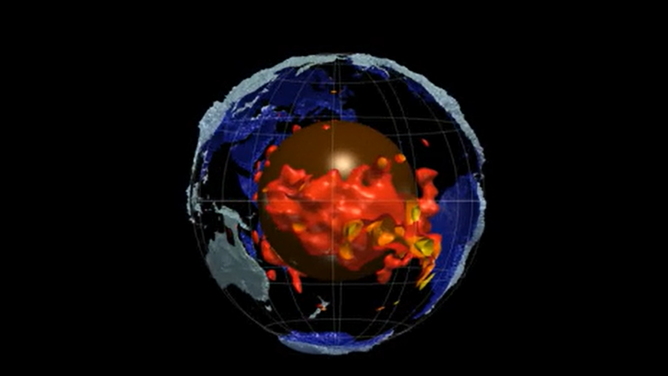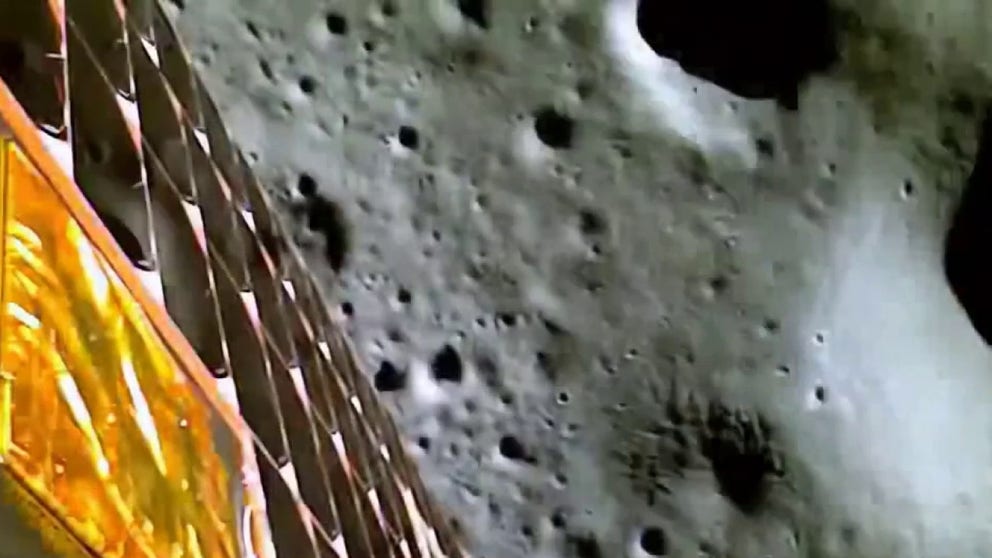Ancient planet could lie within Earth
It is estimated the collision happened around 4.5 billion years ago, and some debris went on to form the Moon.
Watch India's spacecraft come down for landing on the Moon's South Pole
A video from the Indian Space Research Organisation's Chandrayaan-3 moon lander as it comes in for a soft landing on the lunar South Pole. (video credit: ISRO)
PASADENA, Calif. – Scientists at the California Institute of Technology have announced they believe the planet that collided with Earth billions of years ago could still be inside and led to the formation of the Moon.
The study recently published in the journal Nature said the theory has stemmed from the discovery of material from the 1980s that was detected under large parts of Africa and the Pacific Ocean but went decades without being identified.
The dense material is located near Earth’s core and, according to researchers, is believed to contain high levels of iron and reacts to seismic waves differently than surrounding solids.
The blobs are known to researchers to be large low-velocity provinces or LLVPs and hold clues that are estimated to be at least 4.5 billion years old.
SEE THE OBJECTS HUMANS LEFT BEHIND ON THE MOON

Scientists at the California Institute of Technology believe blobs of dense material near Earth's core could be the remnants of the planet Theia.
(California Institute of Technology / FOX Weather)
"A logical consequence of the idea that the LLVPs are remnants of Theia is that they are very ancient," Paul Asimow, a professor of Geology and Geochemistry at CIT, said in a statement. "It makes sense, therefore, to investigate next what consequences they had for Earth’s earliest evolution, such as the onset of subduction before conditions were suitable for modern-style plate tectonics, the formation of the first continents, and the origin of the very oldest surviving terrestrial minerals."
In addition to influencing plate tectonics, the material could hold the key to the formation of the Moon and what happened to the smaller celestial body named Theia.
According to the giant-impact theory, Theia once orbited the sun but, due to the pull of other planets, collided with the protoplanet known today as Earth.
Scientists admit they still do not know why the remnants of Theia are grouped into clumps around Earth’s mantle and say it could be the focus of future studies.
NASA DEVELOPS "MOON DUSTER" TO ZAP AWAY LUNAR DUST
Evidence of Theia has not been found in nearby asteroids or meteorites, which has left some scientists to theorize debris from the planetary collision is either around Earth’s core or is found 238,855 miles away under the Moon’s surface.
